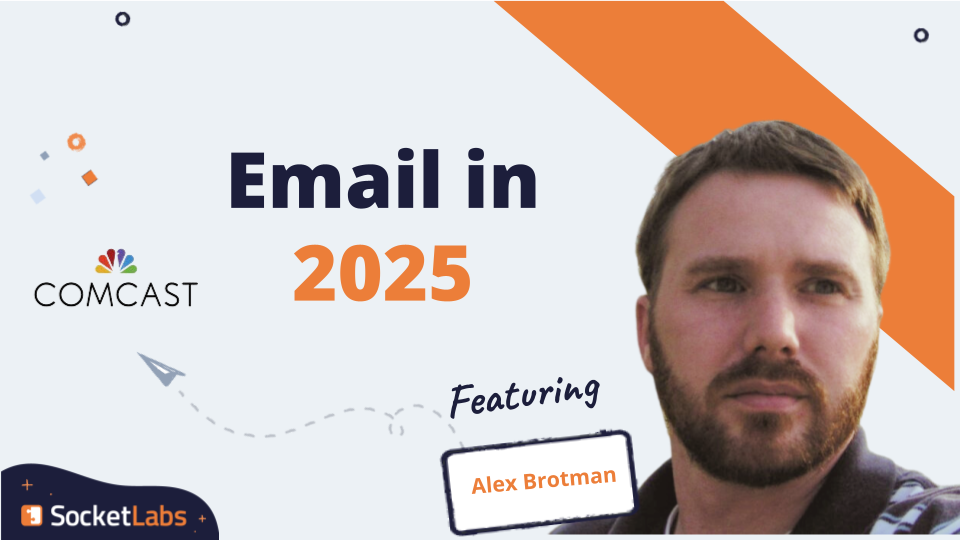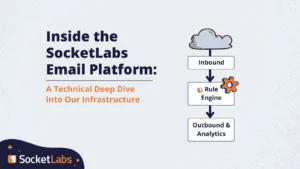Please welcome Alex Brotman!
Alex Brotman is a Sr Engineer in the Anti-Abuse & Messaging Policy group for Comcast. This group is responsible for development, maintenance, and management of the MTAs for “comcast.net.” Alex is also working within M3AAWG as Data & Identity Protection Committee co-chair, and additionally as co-chair for the Program Committee.
We asked Alex our three questions exploring what it is he sees in email’s short-term future and what the norm will be in 2025. Here are his takes.
How do you see email fitting into the marketing mix in 2025?
In an ideal world, the marketing team will use numerous channels working together. Paper, email, mobile, and social (and probably something we haven’t conceived of yet) should be able to work together. If a customer interacts with a social media post, do you also need to email them? In an ideal world, this means the customer sees the promotional or transactional materials in the place that is best for them, and they only receive it once. That may be marketing to SMS and transactional to email, and marketers shouldn’t try to override those preferences.
The troubling part may be the coordination of the personal details where the marketing group would now have a database that can tie together your email, phone, social media handle, address, and your buying habits. Is it worth it to better and more accurately market the customer? That’s up to the entities to decide.
As for email, it is probably the most convenient method by which a customer can sort-of background the marketing information from the brand. The customer can use tabs or filters to push mail into a different view to be available when needed. That could be when they’re shopping at home or in the brick-and-mortar store, where they can likely access their email from a browser or mobile.
What about email do you see as a nice-to-have for now, but feel will be considered table stakes by 2025?
Message authentication is probably the easy choice here. There are more and more indicators that mailbox providers (MBPs) are looking for some sort of domain-based message authentication. This could be expanded a bit as I would think that brands which are not utilizing BIMI today will begin to feel left out, and BIMI has a dependency on DMARC/SPF/DKIM.
I’m also hopeful that the era of insecure transactions will be drawing to an end. At this point, secure data transfer should not be a “nice-to-have.” Ideally, by 2025 all URLs within messages will be required to be HTTPS, all mail must arrive via sessions using TLS. It’s hard to believe we still see conversations where folks ask if they should enable STARTTLS or HTTPS for their messages. As we move toward this goal, we should also strive to eliminate deprecated versions of TLS, while also moving toward deploying DANE and MTA-STS.
What do you hope or wish to see change within email by 2025?
Inbox fatigue and suppression lists.
Go back to my response for question one, and understand that – ahem – with great power comes great responsibility. Essentially, the user is inviting you into the inbox, allowing you to email them about something you believe they may want to know about. That should be treated with caution. Since the onset of the pandemic, the volume of email has increased quite a bit. I see it in our data, and, anecdotally, I see it in my own inboxes. While some of this is tied to transactional messages (e.g., multi-stage shipping notices for online purchases), that is hardly the sole source. I hope in the future brands are more selective about who they’re sending a given campaign to, and can make those campaigns more relevant to the targeted user. Are you sending a campaign about sweaters to someone who lives in Arizona, knowing they’ve never bought anything with long sleeves? Notices about available reservations for a city which they visited four years ago? Can (and should) marketers do better? I should hope so.
I know, a bit of a broken record from me. Today, the paradigm with suppression lists does not seem to serve the recipient. Perhaps that was never the intent. It would be great for email service providers (ESPs) to come forward with a proposal on how to make this more attractive for all parties. Currently, the users have little understanding of what is happening, and front-line support people are typically in the same situation. When a problem does arise, lack of knowledge makes resolution frustrating and time-consuming. I’m not sure if this means each email coming from an ESP contains instructions on how to manage all aspects of their preferences, not just unsubscribe, but re-subscribe as well. Or perhaps if a user re-subscribes, they’d be removed from the suppressions. There has to be a better way. The current situation makes feedback loops (FBLs) problematic and unappealing.








